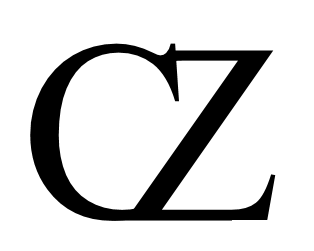| ||||||||||||
The marine saurian (French: saurien océanique) is a Heuvelmans type of sea serpent, usually compared to a crocodile or alligator, but generally larger and reported from open ocean, far from the range of the saltwater crocodile (Crocodylus porosus).[1] It is equivalent to the mystery saurian in the Coleman-Huyghe system,[2] the saurian sea serpent in the Champagne system,[3] and the giant marine crocodylomorph in the Marshall system.[4] Sea serpents classified as marine saurians have been reported from tropical and subtropical waters worldwide,[5] with a number of notable 20th and 21st Century sightings off New Zealand.[6][7]
Bernard Heuvelmans classified only nine sea serpent reports as marine saurians, of which he considered four certain and five probable. Heuvelmans believed the marine saurian was most likely a surviving thalattosuchian, a group of marine crocodilians from the Jurassic and Cretaceous, or possibly a surviving mosasaur. Because he was not certain of how to classify the marine saurian, he did not give it a scientific name.[1] Other cryptozoologists like Richard Freeman feel that oversized and out-of-place saltwater crocodiles (Crocodylus porosus) are a more likely identity, while Karl Shuker writes that a specific identity is impossible to ascertain based on the eyewitness reports.[6] Michael Woodley argues that it is not a reptile at all, but either one or two cetaceans, specifically Basilosaurus and Rodhocetus.[8]
Dale A. Drinnon splits marine saurians into several lesser categories, including a horned crocodile, an alligator-like sea crocodilian, and one or more types of mosasaur.[9] A large marine saurian is also one candidate for the Biblical leviathan,[6] and the Chinese lung,[10] and freshwater versions of the same animals have been suggested as identities for some lake monsters.[11][10]
Sea serpents classified as possible marine saurians[]
- Eagle (United States, 23 March 1830)
- Fly (United States, 1838)
- Monongahela (French Polynesia, 13 January 1852)
- Nemesis (India, 1860)
- Sacramento (North Atlantic, 30 July 1877)
- Rotomahama (New Zealand, 1 August 1899)
- Grangense (Atlantic, May 1901)
- Ambon (Bab-el-Mandeb Strait, 22 October 1904)
- Ayers (China, 1905)
- Java (Oman, 15 October 1906)
- U-28 (Ireland, 30 July 1915)
- U-108 (North Sea, 28 July 1918)
- M. V. Mylark (United States, 15 April 1969)
- Kompira Maru (New Zealand, April 1971)
- Orari River (New Zealand, 1972)
- Picton (New Zealand, 1983)
- Bungalow Beach (The Gambia, 12 June 1983)
- Taupo (New Zealand, 1990)
- Paekakariki (New Zealand, 2001)
- Pembroke Dock (United Kingdom, 5 March 2003)
- Carnival Breeze (Mexico, 2014)
Notes and references[]
- ↑ 1.0 1.1 Heuvelmans, Bernard (1968) In the Wake of the Sea-Serpents, Hart-Davis, ISBN 9780246643124
- ↑ Coleman, Loren & Huyghe, Patrick (2003) The Field Guide to Lake Monsters, Sea Serpents and Other Mystery Denizens of the Deep, TarcherPerigree, ISBN 978-1585422524
- ↑ Champagne, Bruce A. "A Classification System for Large, Unidentified Marine Animals Based on the Examination of Reported Observations," Elementum Bestia: Being an Examination of Unknown Animals of the Air, Earth, Fire and Water (2007), Lulu Press, ASIN B001DSIB2W
- ↑ Marshall, Carl "21st Century Sea Serpents," Animals & Men, No. 64–65 (June 2018)
- ↑ Eberhart, George M. (2002) Mysterious Creatures: A Guide to Cryptozoology, ABC-CLIO, Inc., ISBN 1576072835
- ↑ 6.0 6.1 6.2 Shuker, Karl P. N. (2016) Still In Search Of Prehistoric Survivors: The Creatures That Time Forgot?, Coachwhip Publications, ISBN 978-1616463908
- ↑ Shuker, Karl P. N. (2013) Mirabilis: A Carnival of Cryptozoology and Unnatural History, Anomalist Books, ISBN 978-1-938398-05-6
- ↑ Woodley, Michael (2008) In the Wake of Bernard Heuvelmans: An Introduction to the History and Future of Sea Serpent Classification, CFZ Press, ISBN 978-1905723201
- ↑ Drinnon, Dale A. "Revised Checklist of Cryptozoological Creatures," CFZ Yearbook (2010)
- ↑ 10.0 10.1 Xu, David C. (2018) Mystery Creatures of China: The Complete Cryptozoological Guide, Coachwhip Publications, ISBN 978-1616464301
- ↑ Freeman, Richard (2005) Dragons: More than a Myth?, CFZ Press, ISBN 978-0951287293


